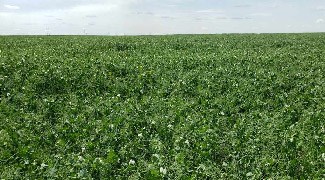Submitted
Crops across the province are advancing as a result of the warm weather and moisture, although crops are behind or at their normal developmental stages.
Sixty-seven per cent of the fall cereals and 32 per cent of the spring cereals are in the heading stage, while 38 per cent of the canola and mustard and 54 per cent of the pulse crops are flowering.
Crop conditions vary greatly across the province, with the majority in poor-to-good condition. Livestock producers now have seven per cent of the hay crop cut and three per cent baled or put into silage. Hay quality is rated as one per cent excellent, 47 per cent good, 33 per cent fair and 19 per cent poor.
Many swaths are significantly smaller than normal due to the lack of moisture this spring. Although many pastures have greened-up from the moisture, they are expected to have a reduced carrying capacity. Pasture conditions are rated as three per cent excellent, 38 per cent good, 42 per cent fair, 15 per cent poor and two per cent very poor.
Rainfall last week ranged from trace amounts to 92 mm in the Kelliher area. The Grenfell area reported up to 80 mm of rain, the Leader area 35 mm, the Foam Lake area 26 mm, the Macklin area 25 mm, the Humboldt area 8 mm and the Glaslyn area 48 mm. There were also reports of strong winds and hail causing damage to crops.
Provincially, topsoil moisture on cropland is rated as two per cent surplus, 79 per cent adequate, 18 per cent short and one per cent very short. Topsoil moisture on the hay land and pasture is rated as one per cent surplus, 75 per cent adequate, 22 per cent short and two per cent very short.
Producers have been applying fungicides, where warranted, on pulse, cereal and oilseed crops. Other sources of crop damage this week include localized flooding, strong winds, hail, lack of moisture and insects such as grasshoppers. Root rots have also caused some damage in pulse crops.
Farmers are busy haying, scouting for insects and disease, repairing equipment and hauling grain.



